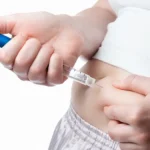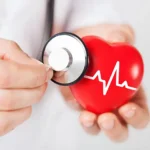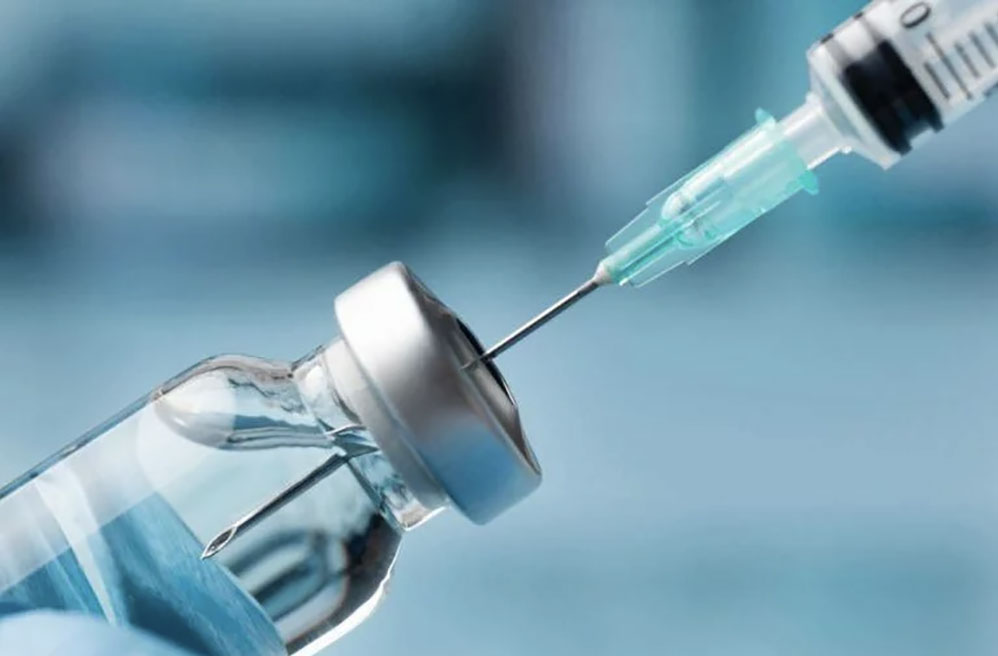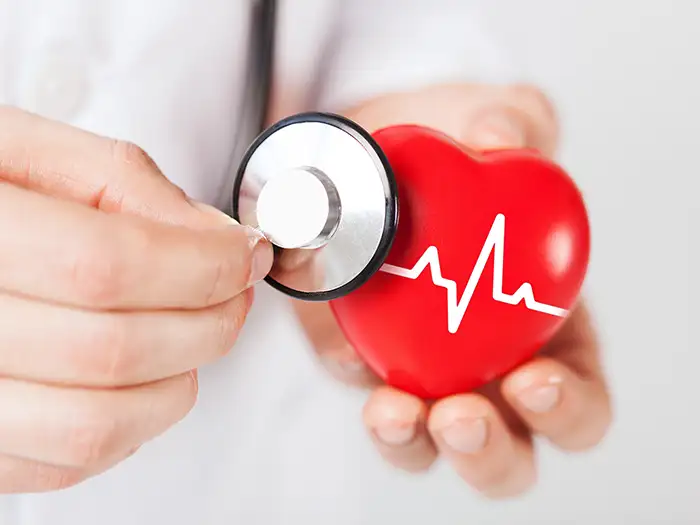When women reach the age of menopause, they are often concerned with hard-to-ignore symptoms, such as hot flashes and mood swings. But menopause can cause bodily changes that you’re not even aware of.
The most serious of these is osteoporosis, a bone disease that progresses silently and secretly until it makes its presence known through a broken bone caused by a fall, or even by coughing. While osteoporosis can occur in men or women, certain demographics are especially prone to it. Keep reading to learn more about osteoporosis, whether you’re at risk, and what you can do to stave it off.
What Is Osteoporosis?
Osteoporosis, which means “porous bone,” is a disease where bone mass is lost when the creation of new bone slows down. As a result, bone strength is decreased and the risk of fractures increases.
Most people think of their bones as solid and static, but they’re actually made of living tissue that’s constantly growing. The dense bone structure on the outside of each bone surrounds a sponge-like interior. When osteoporosis occurs, the holes in this sponge-like texture get bigger, weakening the bone from the inside.
Osteoporosis is rarely a danger until middle age because people typically grow more bone than they lose until they reach their 30s. With age, bone loss happens more quickly than bone growth, resulting in osteoporosis.
Osteoporosis and Menopause
When menopause starts, your body decreases the amount of estrogen that it produces. That lack of estrogen affects your bone mass and strength. As you lose estrogen during perimenopause and menopause, you lose bone. In fact, during the five years following menopause, most women lose up to 10% of their bone mass.
As a result, you become at risk for developing osteoporosis. By the age of 60, 50% of women experience a bone fracture due to osteoporosis. If you’re not taking in minerals that help bones remain strong, including calcium, you’re at greater risk for fractures, which can decrease mobility and quality of life.
The Symptoms of Osteoporosis
The frightening nature of osteoporosis is that it often has no symptoms. You can’t feel the bone loss occurring and you’re probably not aware that you have osteoporosis until you experience a bone fracture.
In some cases, women experience severe back pain and chalk it up to stress or poor posture when, in fact, they have a cracked, collapsed, or fractured vertebra. When you see older women who complain of getting shorter or who display a hunched back or stooped posture, you’re seeing the effects and symptoms of osteoporosis.
Women who are over 65 should have a bone mineral density test to check for osteoporosis. This test is also recommended for menopausal women who have experienced fractures and already have several risk factors.
Who Is at Risk for Osteoporosis?
Most women over 50 are at risk for osteoporosis, since their bone density is rapidly declining thanks to the combination of age and menopausal loss of estrogen. While men also lose bone mass with age, women are four times as likely to develop osteoporosis.
Other risk factors may also come into play. Asian and white women are more likely to develop osteoporosis than women of other races, as are very thin or small women. Heredity also plays a role — if your mother or grandmother has a history of broken bones, you’re likely at greater risk.
In addition, some medications or medical conditions might increase your risk for osteoporosis. Steroids, anticonvulsant drugs, blood thinners, aromatase inhibitors, and thyroid medications all increase bone loss, thereby increasing the chance of osteoporosis. Cancer and stroke history are also risk factors. In addition, a sedentary lifestyle, smoking, and drinking alcohol to excess can increase your chances of osteoporosis.
Reducing the Risk for Osteoporosis
Fortunately, there are steps you can take, both in your lifestyle choices and through help from your doctor, that can reduce your risk for osteoporosis.
Exercise
Weight-bearing exercise can help slow the rate of bone loss and push back against osteoporosis. Weight-bearing exercises include walking, tennis, dancing, tai chi, and weightlifting. Swimming, as good as it is for you, is not a weight-bearing exercise. Look for any exercise that involves resistance or makes you work against gravity, but avoid high-impact exercises that might result in fractures.
You should plan on participating in weight-bearing exercises three or four times per week. As an added benefit, many types of exercise also help you build balance, so you avoid falls and accidents that might cause broken bones.
Supplements
Adding calcium to your diet or taking it via supplements also helps you maintain bone density. Your body needs vitamin D to absorb the calcium you ingest. While the body can manufacture vitamin D from sunlight, many people don’t spend enough time outdoors to get adequate vitamin D. Some menopausal women need prescription-strength levels of vitamin D to keep their bones healthy.
Plan on taking in 1,300 mg of calcium per day. Foods that include calcium include dairy, salmon, sardines, and dark green leafy vegetables (think broccoli and kale). If you can’t get sufficient calcium from your diet, add a calcium supplement to your daily routine, such as calcium carbonate or calcium citrate. However, make sure you don’t get more than 2,000 mg of calcium per day, since too much can lead to kidney stones. Additionally, aim for 600 IU of vitamin D. Other nutrients that benefit your bones include magnesium, vitamin C, vitamin K, and zinc.
Other Lifestyle Changes
Other lifestyle changes can help your body fight bone loss. Take the following steps to help protect your bone health:
- Avoid drinking too much alcohol. Try to cap your alcohol intake at two drinks a day and take at least a couple days off from drinking each week. Alcohol prevents your body from using calcium the way it needs to.
- Quit or avoid smoking. Smokers have a higher risk of developing osteoporosis. When you smoke, your estrogen levels drop even further, putting you more at risk.
- Go outdoors. The more you’re exposed to sunshine, the more your body will make the vitamin D it needs to absorb calcium. Of course, wear appropriate sunscreens to prevent skin damage.
Treatment for Osteoporosis
You’re never too late to seek treatment for osteoporosis. The earlier you seek treatment, the more likely it is to prevent or decrease fractures. Several types of medication are available to help with osteoporosis. Hormone replacement therapy can help not only with osteoporosis, but also many other symptoms of menopause.
Hormone Replacement Therapy
Hormone replacement therapy does a lot to prevent osteoporosis, along with other prominent symptoms of menopause. It’s a first-line treatment for hot flashes, vaginal dryness, night sweats, and many other unpleasant symptoms associated with menopause.
Its effects on bone density are well-known. Hormone replacement therapy decreases the risk of fractures by 40% in menopausal women. It actually increases bone density at a rate of fiver percent across two years. Hormone replacement therapy works by increasing estrogen levels within the body, which in turn, helps reduce bone loss. However, it’s only recommended for use by women during menopause, not by men or younger women.
Medication
Some women use other medications to fight osteoporosis. The options include:
- Bisphosphonates: These interfere with the process by which bone is broken down within the body. Prescription bisphosphonates include alendronate (Fosamax) and ibandronate (Boniva), along with several other choices.
- Selective estrogen receptor modulators (SERMs): Within your bones, these medications work like estrogen to build bone strength and prevent bone loss. SERMs, such as raloxifene (Evista), can decrease the risk of spinal fractures by up to 50%. However, potential side effects include blood clots.
- Parathyroid hormones: Hormones such as teriparatide (Forteo) and abaloparatide (Tymlos) help rebuild bone mineral density. These medications are given by injection.
- Denosumab: This is a monoclonal antibody produced in a laboratory that blocks the mechanism that breaks down bone. It’s only used with women who are at high risk of fractures.
Help for Osteoporosis in Boston, MA
If you’re concerned about your bone health — perhaps you have a family history of osteoporosis or you’re going through menopause yourself — we can provide hope and help. At Hormonally Balanced, we understand all the potential issues surrounding menopause and we’re ready to listen to you. Make an appointment today to talk with us about your concerns and get help with your potential osteoporosis. We want you to be healthy and we have the skill and experience to promote your well-being through menopause and beyond.






